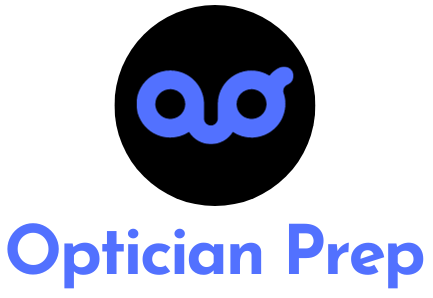American Board of Optometry Study Guide—unlock your pathway to certification success with focused preparation.
- Expert-Recommended Resources: Curated list of top study materials to streamline your prep.
- Strategic Study Planning: Tailored approach to enhance your learning efficiency.
- Practice & Performance: Techniques to maximize your practice test results and exam performance.
Elevate your exam-readiness with our American Board of Optometry Study Guide.
- Understanding the American Board of Optometry Exam
- Key Topics Covered in the Optometry Exam
- Study Materials and Resources
- Creating an Effective Study Plan
- Practice Tests and Sample Questions
- Test-Taking Strategies and Tips
- Staying Updated with Board Requirements
- Conclusion: Next Steps After the Study Guide
Understanding the American Board of Optometry Exam
The American Board of Optometry Exam is more than just a test; it’s a crucial milestone in your journey as an optometry professional. Successfully navigating this exam is key to achieving board certification, which not only enhances your credibility but also opens doors for advanced career opportunities.
What is the American Board of Optometry Exam?
The exam itself is a rigorous, comprehensive assessment designed to gauge your understanding and competencies in the field of optometry. Comprised of multiple-choice questions, it meticulously covers various topics pertinent to patient assessment, diagnosis, and management.
Exam Structure and Content
While facing such a broad spectrum of subjects may seem daunting, getting familiar with the exam outline will give you a solid foundation for your study plan. The exam is skillfully structured to mirror the complexity and scope of real-world optometry practice, challenging you to demonstrate not just knowledge, but applied critical thinking in patient care.
For individuals with specific needs, rest assured that the board has partnered with Meazure Learning to ensure that everyone has the accommodations necessary to exhibit their true potential.
Key Topics Covered in the Optometry Exam
Delving into the American Board of Optometry study guide, you’ll encounter diverse topics that reflect the realities of optometric care. Prepare to immerse yourself in the core facets of optometry, such as:
- Ocular Disease Management: Understanding how to identify, manage, and treat common and complex ocular conditions.
- Pharmacology: Familiarity with drugs used in eye care, their indications, contraindications, and side effects.
- Optics and Refraction: Expertise in vision correction, the principles of optics, and the application of refraction techniques.
By thoroughly studying these topics, you position yourself at the forefront of optometric excellence, ready to meet the challenging demands of the exam and, ultimately, patient care.
Study Materials and Resources
Mastering the content for the American Board of Optometry Exam requires accessing the right resources. The study guide is essential for steering your preparation, but complementing it with additional materials can significantly enhance your readiness. Consider integrating the following into your arsenal:
- Authoritative Texts: Source the most current editions of standard optometry textbooks that are widely endorsed by industry experts.
- Digital Libraries: Digital repositories such as the Optometric Extension Program Foundation offer a wealth of material that can be instrumental in your studies.
- Continuing Education Modules: These can offer a more dynamic approach to learning, presenting information in digestible, focused segments.
How to Choose Your Materials
When selecting your study materials, prioritize those that are most aligned with the American Board of Optometry’s standards and the exam’s content outline. Quality trumps quantity; using vetted, reliable sources should be the cornerstone of your preparation strategy.
Creating an Effective Study Plan
Crafting a study plan is akin to devising a roadmap for your journey to board certification—it should be comprehensive, realistic, and adaptable. Here’s how to mold your study plan into a cohesive strategy:
- Evaluate Your Current Knowledge: Assess your strengths and weaknesses to allocate study time more efficiently.
- Set Clear Milestones: Establish measurable, attainable goals that will help you monitor your progress.
- Balance Your Study Time: Distribute your study hours wisely across different topics, ensuring you focus more on areas where you need the most improvement.
- Incorporate Diverse Learning Methods: Vary your study routines by blending reading, writing notes, and interactive learning to cater to different facets of your learning style.
Establishing a Study Schedule
Managing your time is pivotal. Your study schedule should integrate effectively with your personal and professional obligations. Consistently dedicating time each day to focus on your prep work is crucial. Remember, regular, shorter study sessions are often more productive than sporadic, lengthy ones.
Remember to reward yourself for small victories along the way. Celebrating progress can help maintain motivation and push you through the more challenging aspects of your study plan. With these strategies in place, you’ll be well on your way to mastering the American Board of Optometry study guide and excelling in the certification exam.
Practice Tests and Sample Questions
The act of preparation is incomplete without putting your knowledge to the test with practice exams and sample questions, constructing a realistic simulation of the examination environment.
Why Practice Tests Are Crucial
Including practice tests in your study routine can significantly bolster your readiness for the American Board of Optometry Exam:
- Identify Weak Areas: They illuminate the topics you need to revisit and strengthen further.
- Time Management: You’ll understand how to better allocate your time across different sections of the actual exam.
- Familiarity with Question Styles: Practice questions acclimate you to the format and phrasing of the board’s examination questions.
Where to Find Sample Questions
Reputable resources to mine practice tests and sample questions include:
- The Official ABO Study Guide: The American Board of Optometry study guide is furnished with sample questions that mirror the real exam.
- Continuing Education Platforms: Look for online platforms offering mock exams specifically for optometry board preparation.
- Formative Assessments: Some academic institutions and professional bodies provide formative assessment tools useful for exam preparations.
When engaging with these materials, treat practice sessions with the same seriousness as the actual exam. This mental discipline will pay dividends when you’re calmly navigating the real test.
Optimizing Practice Test Performance
To truly benefit from practice tests, here are some steps to follow:
- Review Incorrect Answers: Understand why certain answers were wrong and revisit the related study material.
- Simulate the Exam Environment: Practice under similar conditions as the real test to acclimate to potential stressors.
- Test Yourself Again: Repetition is key. Regularly retesting ensures information retention and confidence building.
By routinely challenging yourself with these practice tools, you’re honing your test-taking abilities, readying you for the rigors of the American Board of Optometry Exam.
Test-Taking Strategies and Tips
As the exam date approaches, formulate an approach to tackle the test with poise and precision.
Mastering the Art of the Exam
Embed these strategic maneuvers into your test-day tactics:
- Read Questions Thoroughly: Precision in understanding the question can prevent costly mistakes.
- Eliminate Incorrect Options: Narrowing down your choices increases the odds of selecting the right one.
- Manage Your Time: Keep an eye on the clock to ensure you have ample time for each question, without haste.
Handling Tricky Questions
Even well-prepared candidates can stumble upon perplexing questions. In such cases:
- Stay Calm: Panic clouds judgment. Take deep breaths and approach the problem with a clear mind.
- Break It Down: Analyze complex questions piece by piece to untangle the knot.
- Educated Guesses: If all else fails, rely on the process of elimination to make an informed guess.
These strategies are not mere quick fixes; they are continuous practices that refine your problem-solving skills under exam pressures.
Staying Updated with Board Requirements
The American Board of Optometry occasionally revises its standards and requirements. Staying abreast of these updates ensures your examination preparation remains in lockstep with the board’s expectations.
Continuous Updates on Board Policies
Regularly check official channels such as the American Board of Optometry website for:
- Exam Content Updates: Stay informed about changes to the scope and structure of the exam.
- Continuing Education: Keep track of any alterations to your continuous professional development obligations.
- Certification Protocol: Ensure you are up-to-date with the recertification process or any administrative adjustments.
Understanding these variations is pivotal in ensuring that your hard work aligns with the most current board standards.
Conclusion: Next Steps After the Study Guide
Finishing the American Board of Optometry study guide is a commendable feat, but your journey doesn’t end there.
Post-Study Guide Action Plan
Consider these steps to further consolidate your readiness:
- Discussion Groups: Engage with peers or mentors for intellectual exchange and clarification of complex topics.
- Self-Care Regimen: A well-rested mind is critical. Ensure a balanced lifestyle with adequate sleep, nutrition, and relaxation.
- Soft Skills Development: Enhance your test-taking experience by working on vital soft skills such as stress management and time organization.
Remember, each active step you take after completing the study guide amplifies your potential for success on the exam and helps you emerge as a certified optometry professional, validated and ready to excel in your practice.

